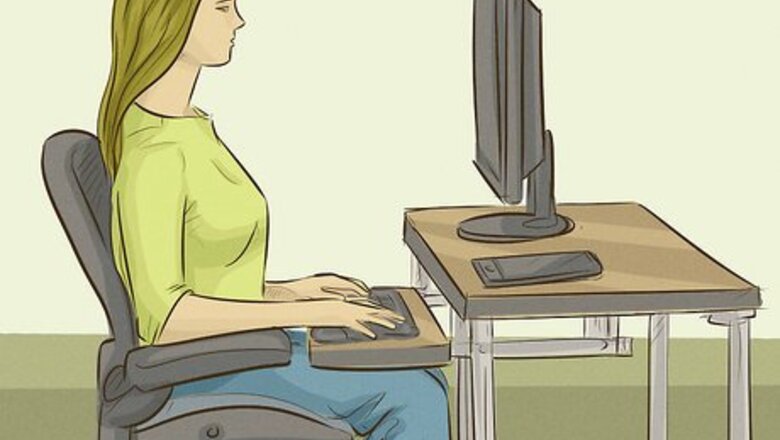
views
Sit back in your desk chair.
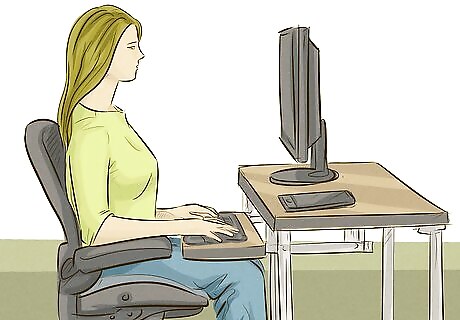
This stops you from leaning forward too much at your desk. If you work at a desk, a lot of your slouching might stem from that. Check in with yourself throughout the day to see if you're leaning toward your computer or over your desk as you work. Remind yourself to lean back in your chair and keep your back flush with the chair's support. Try setting an hourly alarm on your phone to remind you to sit up straighter. This helps you get into the habit, so you eventually don’t need the reminder.
Keep your monitor at eye level.

Your monitor's position can affect your posture a lot. Adjust your computer screen so that the middle of the screen is at eye level. Also, position the monitor so it's about an arms-length away from you to help you maintain proper posture and prevent back pain. If you feel too far away from your desk or computer, pull your chair closer or move your monitor closer to you on the desk. If you use a laptop, connect it to an external monitor and keyboard to avoid hunching over it.
Place your feet flat on the floor when you’re sitting.

It's easier to center your weight and keep your spine straight this way. If you sit too far forward, you put pressure on your pubic bone. If you sit too far back, you put pressure on your tailbone. Sit with your feet flat on the floor to keep your back straight. Try to center your weight between your buttocks and pubic bone.
Keep your shoulders back and chest out as you sit.
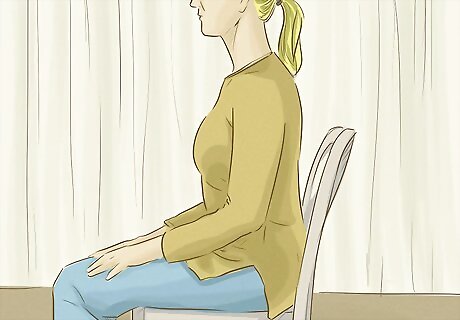
This helps you sit up tall and straight. Pinch your shoulders back towards the middle of your back and thrust your chest forward while you sit. If you feel your head move back when you do this, you’re doing it right! Your back straightens naturally as you push your shoulders back and open your chest. Make sure you keep your shoulders straight and relaxed. Avoid elevating, rounding, or pulling them too far backward.
Make a lower back pad for your chair.
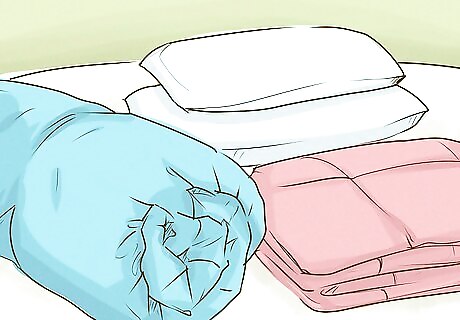
Added lower back support can do a lot to correct slouching. Take a towel and fold it in half and then in half again. From the long rectangle, roll it into a cylinder, making a cushy pillow to put in your chair. Place it behind your lower back to help you sit up straight. If a bath towel is too big, you can try a hand towel instead. Just fold it in half once and roll it into a small pillow for your back.
Get up and stretch every half hour when you’re sitting.
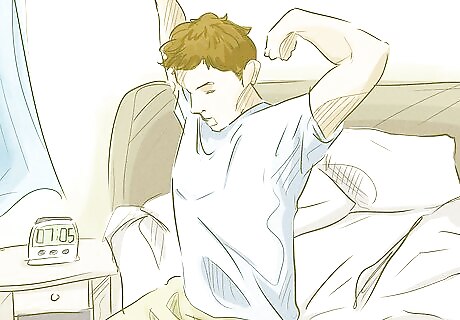
Stretching for 1-2 minutes keeps your muscles loose and prevents fatigue. Stand up and place your hands against your lower back with fingers facing down. Lean back as far as you can and hold this position for a few seconds. Repeat this stretch a few times to get the kinks out of your back. If you're at home, you can also lie flat on the floor with your weight on your elbows. Push your chest up to stretch out your lower back and spine. Only do these exercises to the extent that your muscles are comfortable. Don't overextend your muscles to avoid causing injury.
Align your shoulders and spine when you stand up.
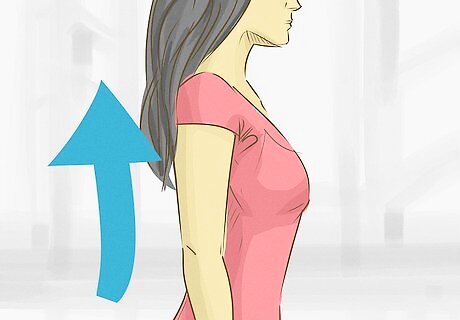
Push your shoulders back and tuck your abs to straighten your spine. Keep your feet hip-distance apart and balance your weight mainly on the balls of both your feet. Relax your knees and let your arms hang loosely at your sides. Imagine there is a string from the bottom of your feet to the top of your head, keeping your body aligned and balanced.
Balance the weight you carry evenly.

Heavy loads make it difficult to maintain a good posture. If you're carrying a large load, like a big purse, a backpack, or luggage, try to balance the weight as much as possible to keep strain off of your muscles and joints. If the weight is balanced, it’s easier to keep your normal, straight posture while you walk.f Try to use bags that distribute weight evenly, such as backpacks, cross-body bags, or rolling luggage.
Put a pillow between or under your knees while you sleep.
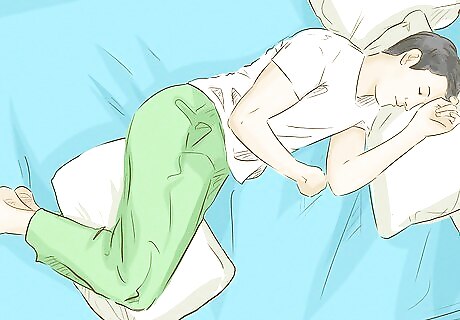
If you're slouching during the day, you may be doing it at night, too. If you sleep on your side, try putting a pillow between your knees to help lessen the pull on your lower back. If you sleep on your back, put a pillow underneath your knees to help release the tension placed on your lower back while you sleep. Whether you sleep on your back or your side, placing a rolled-up towel under your neck can help with the alignment of your head and shoulders. Avoid sleeping on your stomach; this places too much strain on your neck.
Do exercises that strengthen your core.
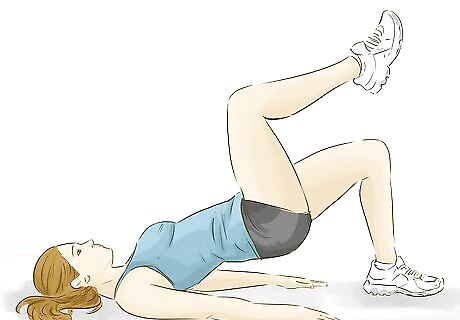
Your core plays a big role in helping you keep your spine straight. The muscles in your core stretch from the area around your rib cage to around mid-thigh. These muscles work together to help regulate your posture. Exercises that strengthen these muscles, like yoga or pilates, can improve your posture and overall health. Try exercises that work all of your core muscles. For example, lie flat on the ground with your legs bent above you, as if your feet were flat against the wall. Engage your abs and extend one leg down almost to the floor, straightening it as you go. Hold for a second just above the floor before you bring it back up. Repeat this for the other leg. Do 20 sets of this exercise.
Do easy neck and back stretches increase your flexibility.
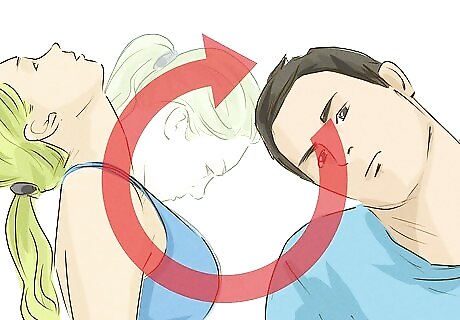
A lack of flexibility causes muscle imbalance and poor body alignment. Pull your head back and center it over your spine. Stand up and pull your shoulders back and down. Bend your arms, moving them down as if you are trying to put your elbows in your back pockets. Push your palms outward and hold this position for at least 6 seconds. Repeat this a few times during the day to increase your flexibility.
Try the superman stretch.
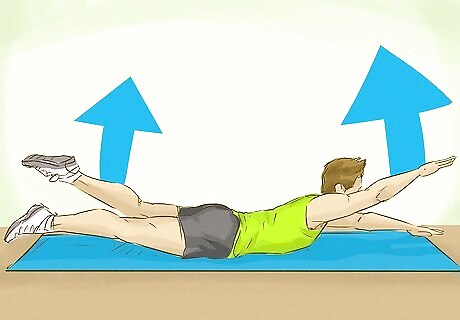
Exercising the muscles in your back helps keep up your posture. Lie face down on the floor and extend both your arms over your head. Turn your thumbs toward the ceiling. Squeeze your glutes, contract your core, and lift your arms, head, and legs about 4 inches (10 cm) off the ground. Hold this position for 2 seconds, then lower your limbs back down to the floor. Repeat this move at least 15 times to help strengthen your shoulders and activate the muscles that strengthen your spine.
Try simple chest stretches.
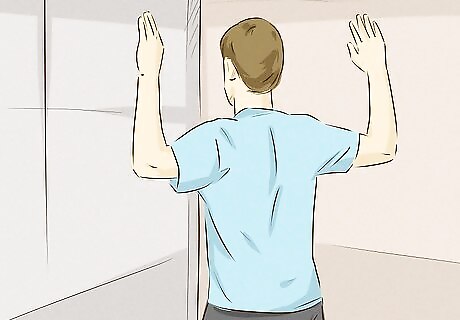
Your chest muscles play an important role in maintaining posture. Stand in a corner with your chest facing it. Bend your arms and place your forearms on the wall with your palms slightly below shoulder height. Slowly squeeze your shoulder blades back together, leaning into the corner further. Hold this stretch for 3 seconds and repeat it at least 12 times. Alternatively, stand in a doorway and hold your arm at your side at a 90-degree angle. Hold your elbow even with your shoulder and place your arm on the door jamb. Slowly lean forward, pushing out from the doorway and pulling your arm back against the jamb. Hold this for 30 seconds, release the stretch, and repeat with the opposite arm.
Try thoracic extensions.
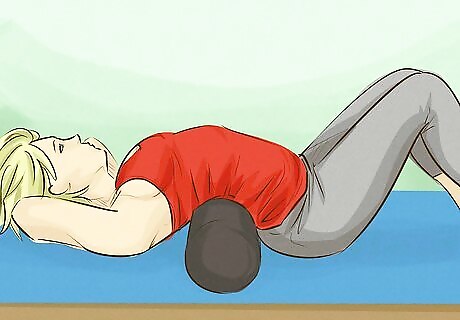
These keep the midsection of your spine loose and stop hunching. For this exercise, get a foam roller. Place the foam roller under your upper back with your feet and bottom on the floor. Place your hands behind your head and your elbows as close to your ears as possible. Let your head drop back, curling your back around the foam roller. Hold this position for 15 seconds and come back up.
Get chiropractic treatment if you're still struggling.

This can help you stop slouching when other things don’t work. If your posture problem persists despite the techniques and exercises above, seek out a licensed professional in your area to improve your range of motion and reduce any pain that your slouching is causing. Most chiropractors do a comprehensive intake examination to tailor your therapy to your body and any particular discomfort you have.

















Comments
0 comment